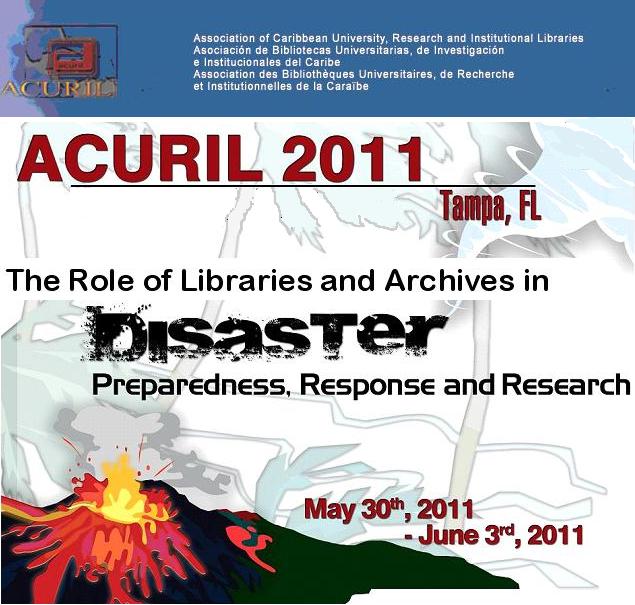Expanded Roles for Libraries and Archives in Disaster Preparedness and Response
Theme
Response of libraries and archives to disasters: Preserving Memories, Community, and Restoring Hope
Start Date
1-6-2011 3:00 PM
End Date
1-6-2011 5:00 PM
Document Type
Workshop
Description
As we know, every library and archives must have disaster plans that address the welfare of their staff, the health and safety of their users, and meet the preservation needs of their collections. This is an organization’s responsibility to both parent agencies and to the community at large. Libraries and archives, acting as repositories of the cultural heritage material of their local community, the state, the region in which they are based, and sometimes the country, engender a tremendous amount of public trust in these institutions. All are familiar with disaster planning and its components, but there are expanded roles for which libraries and archives should plan—that of community shelter, information center, and occasionally a symbol of continuity for local residents. Over the past few years libraries and archives have been asked to act as shelters during disasters. Libraries and archives have also become information centers because these institutions often have internet access and the technological infrastructure for emergency communications. In addition, these organizations are critical because they hold information resources that can be used by emergency first responders, local government and businesses, as well as, offering access to resources for displaced citizens. These institutions can become symbols of community health. Having access to cultural resources, usable collections, and a safe building all represent a healthy and recovering community to the public at large. In both the presentation and paper, LYRASIS staff will address these new and emerging roles for libraries and archives. Identification of institutions that have played a part in the recovery of their community’s health and how institutions have made this transition will be fully examined. Staff will also suggest how organizations may make inclusions into institutional disaster and continuity of operations plans, and how they might work in collaboration with local first responders to offer services. The presentation is based upon case studies from previous disasters as well as new advances in disaster planning and recovery developed through work being done as part of LYRASIS' new National Endowment for the Humanities Preservation Education grant.
Expanded Roles for Libraries and Archives in Disaster Preparedness and Response
As we know, every library and archives must have disaster plans that address the welfare of their staff, the health and safety of their users, and meet the preservation needs of their collections. This is an organization’s responsibility to both parent agencies and to the community at large. Libraries and archives, acting as repositories of the cultural heritage material of their local community, the state, the region in which they are based, and sometimes the country, engender a tremendous amount of public trust in these institutions. All are familiar with disaster planning and its components, but there are expanded roles for which libraries and archives should plan—that of community shelter, information center, and occasionally a symbol of continuity for local residents. Over the past few years libraries and archives have been asked to act as shelters during disasters. Libraries and archives have also become information centers because these institutions often have internet access and the technological infrastructure for emergency communications. In addition, these organizations are critical because they hold information resources that can be used by emergency first responders, local government and businesses, as well as, offering access to resources for displaced citizens. These institutions can become symbols of community health. Having access to cultural resources, usable collections, and a safe building all represent a healthy and recovering community to the public at large. In both the presentation and paper, LYRASIS staff will address these new and emerging roles for libraries and archives. Identification of institutions that have played a part in the recovery of their community’s health and how institutions have made this transition will be fully examined. Staff will also suggest how organizations may make inclusions into institutional disaster and continuity of operations plans, and how they might work in collaboration with local first responders to offer services. The presentation is based upon case studies from previous disasters as well as new advances in disaster planning and recovery developed through work being done as part of LYRASIS' new National Endowment for the Humanities Preservation Education grant.


